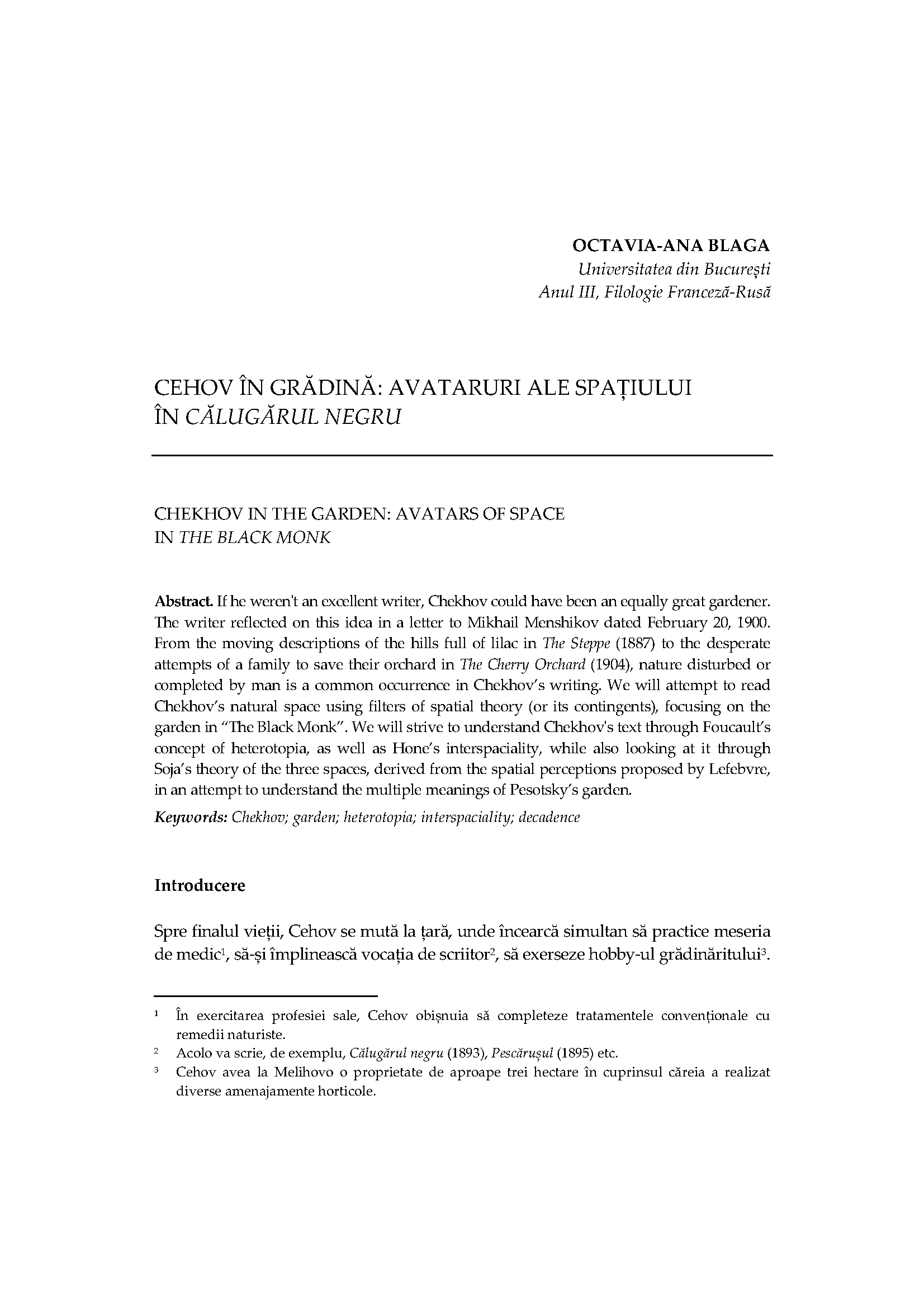CEHOV ÎN GRĂDINĂ: AVATARURI ALE SPAȚIULUI ÎN CĂLUGĂRUL NEGRU
DOI:
https://doi.org/10.62229/slv13/3Keywords:
Chekhov, garden, heterotopia, interspaciality, decadenceAbstract
CHEKHOV IN THE GARDEN: AVATARS OF SPACE IN THE BLACK MONK
If he weren't an excellent writer, Chekhov could have been an equally great gardener. The writer reflected on this idea in a letter to Mikhail Menshikov dated February 20, 1900. From the moving descriptions of the hills full of lilac in The Steppe (1887) to the desperate attempts of a family to save their orchard in The Cherry Orchard (1904), nature disturbed or
completed by man is a common occurrence in Chekhov’s writing. We will attempt to read Chekhov’s natural space using filters of spatial theory (or its contingents), focusing on the garden in “The Black Monk”. We will strive to understand Chekhov's text through Foucault’s concept of heterotopia, as well as Hone’s interspaciality, while also looking at it through Soja’s theory of the three spaces, derived from the spatial perceptions proposed by Lefebvre, in an attempt to understand the multiple meanings of Pesotsky’s garden.





